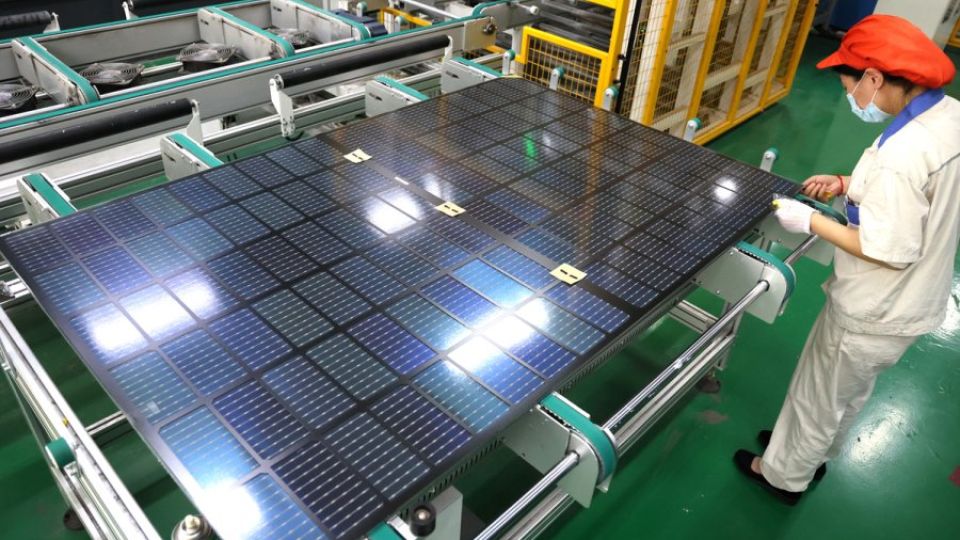December 28, 2022
BEIJING – Since the beginning of the 21st century when some of the manufacturing hubs in China’s coastal regions began facing a labor shortage, the structural contradiction in the labor market has become increasingly evident. This contradiction has become more profound after the pandemic broke out, affecting enterprises’ normal production and operation, and further slowing down economic growth in some areas.
In 2022, it should be noted that the manufacturing sector continues to face a shortage of labor. The labor shortage in the manufacturing sector, which reflects imbalanced socioeconomic development, can be attributed to five factors.
First, the declining working-age population has increased the imbalance between supply and demand in the labor market. According to the Seventh National Census, whose results were released last year, not only is China’s working-age population shrinking but also the population is growing at an even slower rate. The 15-59 age group in the total population added up to 63.35 percent, 6.79 percentage points less than in the sixth census, and the numbers of new employees (aged 16 to 24) and mature workers (aged 35 to 44) decreased significantly, further worsening the supply-demand imbalance.
Second, fewer migrant workers are choosing to work in the manufacturing sector, while most of the jobs lying vacant require migrant workers. According to the National Bureau of Statistics, the number of farmers who chose to work in enterprises in their hometowns in 2021 was 120.79 million, up 4.1 percent year-on-year and 2.8 percentage points higher than that of migrant workers living in other areas. While the percentage of migrant workers employed within their home province increased 1.4 percent from 2020, 0.3 percentage points higher than cross-provincial migrant workers, about 27.1 percent of migrant workers were engaged in the manufacturing sector, 0.2 percentage points lower than 2020.
Third, the supply of talents cannot meet the demand created by industrial reform. For upgrading low-end manufacturing, and ensuring the development of high-tech industries and success of new forms of businesses, more skilled workers are required.
But according to the Ministry of Human Resources and Social Security, China had only over 200 million skilled workers, or roughly 26 percent of the total labor force in 2021, much fewer than those in major industrial powers such as Germany and Japan. As such, the authorities should strengthen voluntary education and improve the training programs in order to produce more skilled workers to meet the demand of new technologies and industrial development.
Fourth, manufacturers need to improve their quality, and raise their standard and wages to make manufacturing jobs more attractive. Compared with other industries, most jobs in China’s manufacturing sector do not require creativity and/or innovation, placed as they are at the bottom end of industry chains.
Fifth, the job market cannot meet the expectations of an increasingly younger workforce. Although a large number of manufacturing jobs are lying vacant, many young migrant workers, especially those born in the 1980s and 1990s, don’t want to work in factories, as they are more educated than the earlier generations and eager to settle in cities. They also seek better working conditions and legal entitlements.
The shortage of workers in the manufacturing sector reflects the structural contradictions in the labor market. By addressing this problem, the authorities can optimize the use of human resources in factories, build human capital for economic development and improve the working conditions. Efforts should also be made to balance supply and demand, and promote the high-quality development of manufacturing.
Also, the authorities should pursue an employment-first policy to promote economic development and industrial transformation, and improve talent management. They should provide support for the real economy, too, as well as upgrade the industrial structure, strengthen the supply and value chains, and boost digital transformation.
While it is necessary to develop high-end, smart and green manufacturing, further optimize the marketing environment and implement policies to support small and medium-sized businesses, the manufacturers should be encouraged to recruit more people, and respect workers’ rights.
Besides, enterprises should be encouraged to develop better training programs to help young workers adapt to industrial reform and meet the job requirements. It is also necessary to help residents in rural areas develop skills and encourage them to set up their own businesses, while the whole society should respect workers, and their knowledge, talents and creativity.
The authorities also need to make talents an important part of the national development policy, so as to develop a quality workforce, and pursue a more proactive, open and effective policy for training competent professionals.
The author is an associate researcher at the Chinese Academy of Labor and Social Security.


